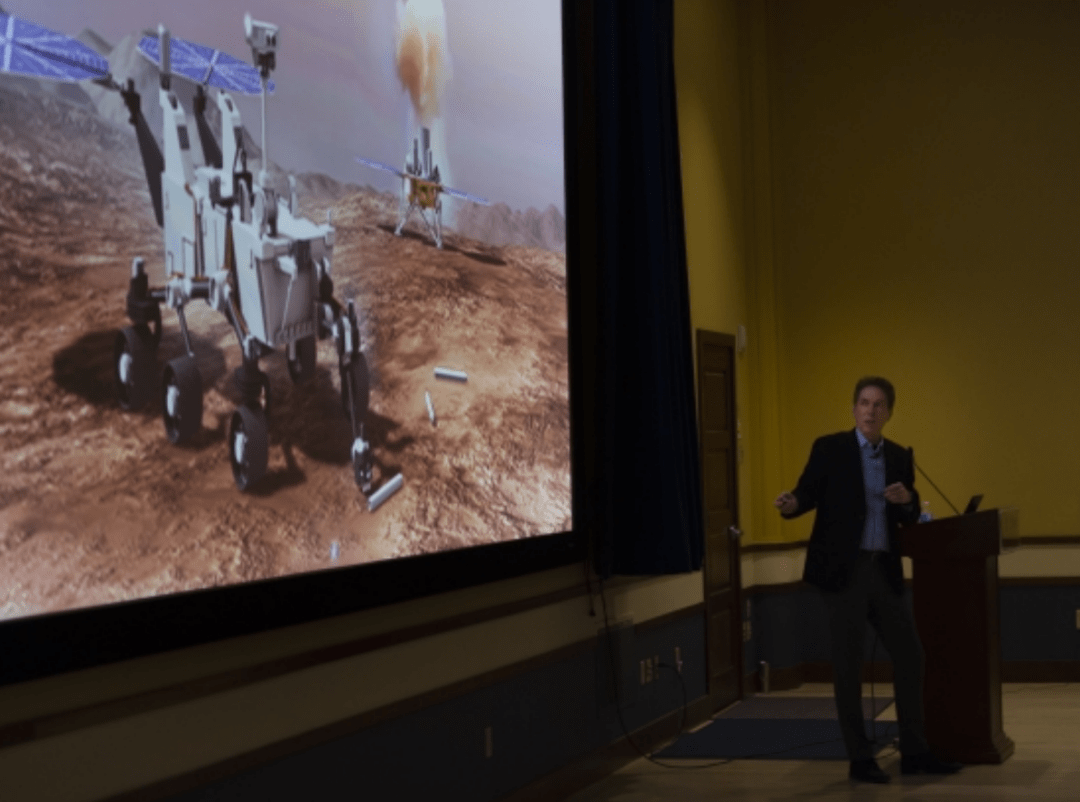NASA official tells MSU students: The future of sending humans to Mars is you
Friday Feb. 23rd, 2018
On Thursday a senior NASA official told a packed Procrastinator Theater at Montana State University that the space agency is well on its way to sending humans to Mars.

“I think 2035 is reasonable,” said Paul McConnaughey, an associate director at NASA’s Marshall Space Flight Center, about when people might first touch down on the red planet.
In an hour-long presentation to MSU students, faculty and members of the public, McConnaughey outlined the progress NASA is making on a new generation of spacecraft designed to reach the moon, Mars and beyond.
“We’re actually to the point where we have the technology and the capability to put a system together for a human mission to Mars,” McConnaughey said.
McConnaughey’s team at Marshall Space Flight Center has played a key role in developing what NASA calls its new Space Launch System, which includes rockets significantly more powerful than those used for NASA’s space shuttles and for the much-celebrated launch earlier this year of SpaceX’s Falcon Heavy.
The powerful rockets are now being integrated with a system of habitation pods and other units adapted from previous NASA missions with the new purpose of long-duration human space travel, McConnaughey said.
“We’re very close to the final assembly for this system,” he said.
Because so much infrastructure is required to support human life on the red planet, multiple units launched separately from Earth will be assembled in orbit around the moon before proceeding to Mars, McConnaughey explained.
Unmanned missions to Mars, including a 2020 launch of a rover similar to NASA’s legendary robot named Curiosity, will pave the way for the human missions. The Mars 2020 rover, for instance, will test ways of producing the oxygen that Mars-going astronauts will need.
Although Curiosity and other rovers have produced a wealth of knowledge about Mars, sending humans is the logical next step in expanding humanity’s scientific understanding of the planet, according to McConnaughey.
“Humans always find things that robots don’t,” he said. “When humans explore … we find out what we don’t know.”
McConnaughey, who earned his master's degree and doctorate from Cornell University and has worked at Marshall Space Flight Center since 1986, said that working with NASA’s talented workforce, which includes many MSU graduates, has been very rewarding.
At the event, which was hosted by MSU’s Norm Asbjornson College of Engineering as part of the university’s 125th anniversary celebration in 2018, McConnaughey encouraged MSU students to apply for NASA internships and to pursue careers with the space agency.
Planning and carrying out ambitious space exploration projects like sending humans to Mars is a decades-long process, he said. And because the next generation of Mars missions is now ramping up, it will today’s young people who see it through to completion.
“The future of getting to Mars isn’t me,” McConnaughey told the mostly student audience. “It’s you.”
| Tweet |